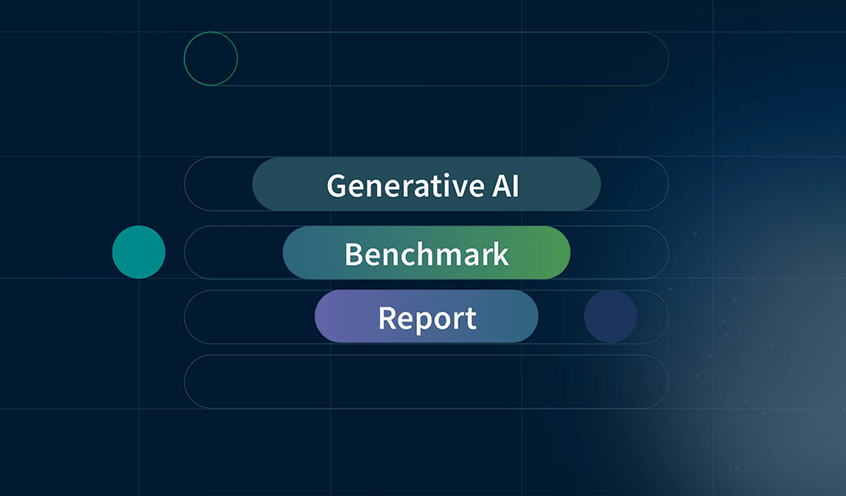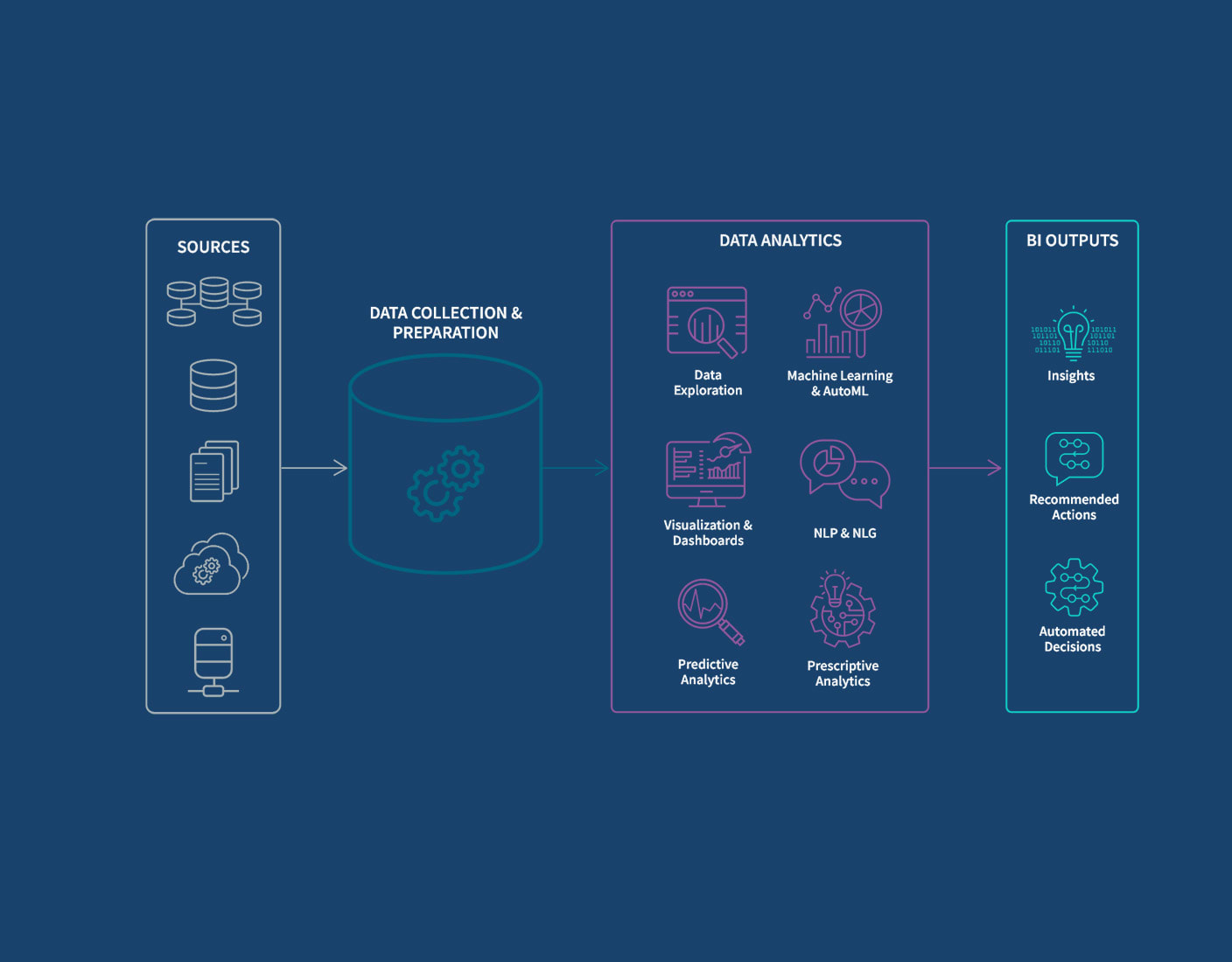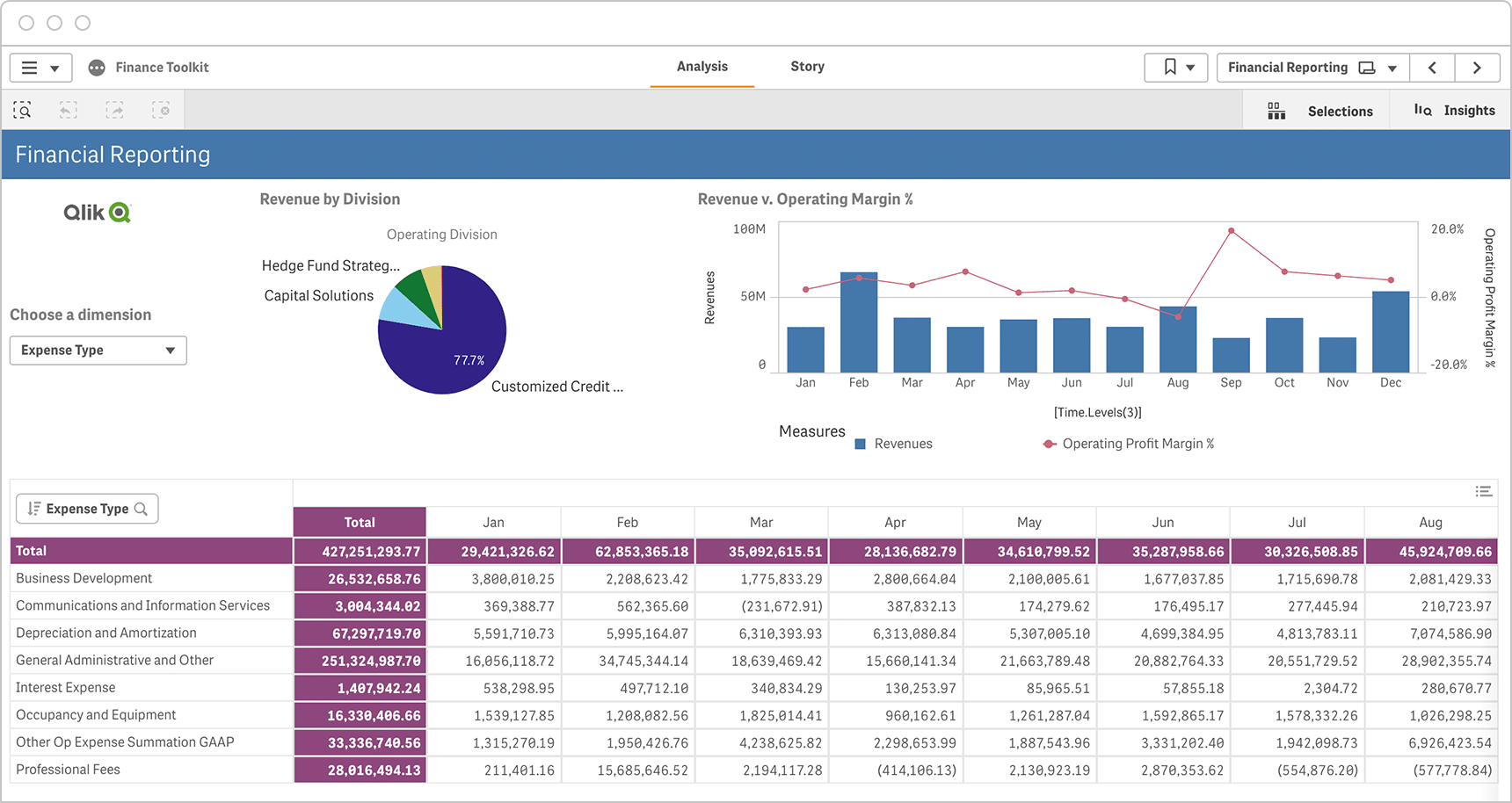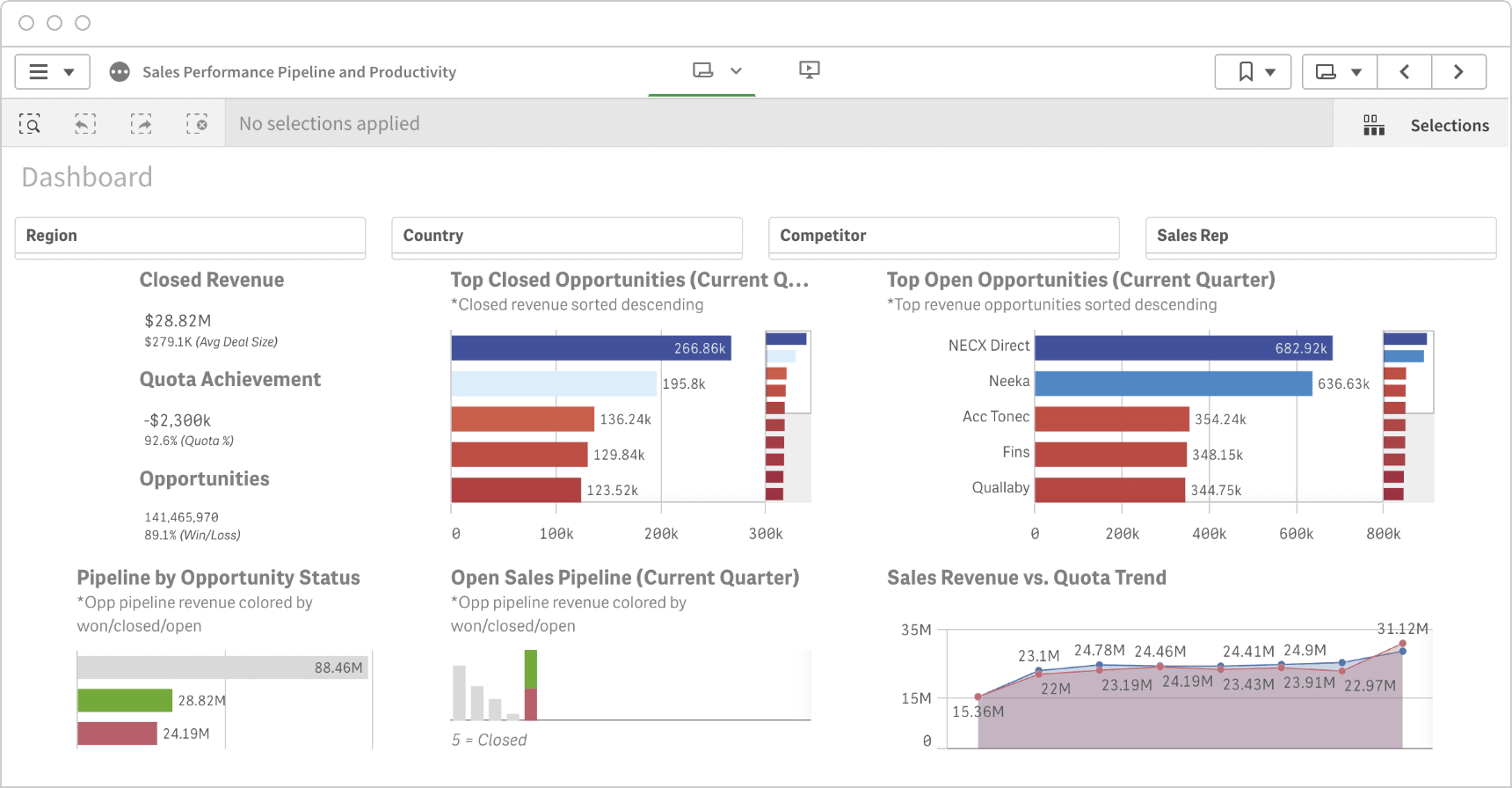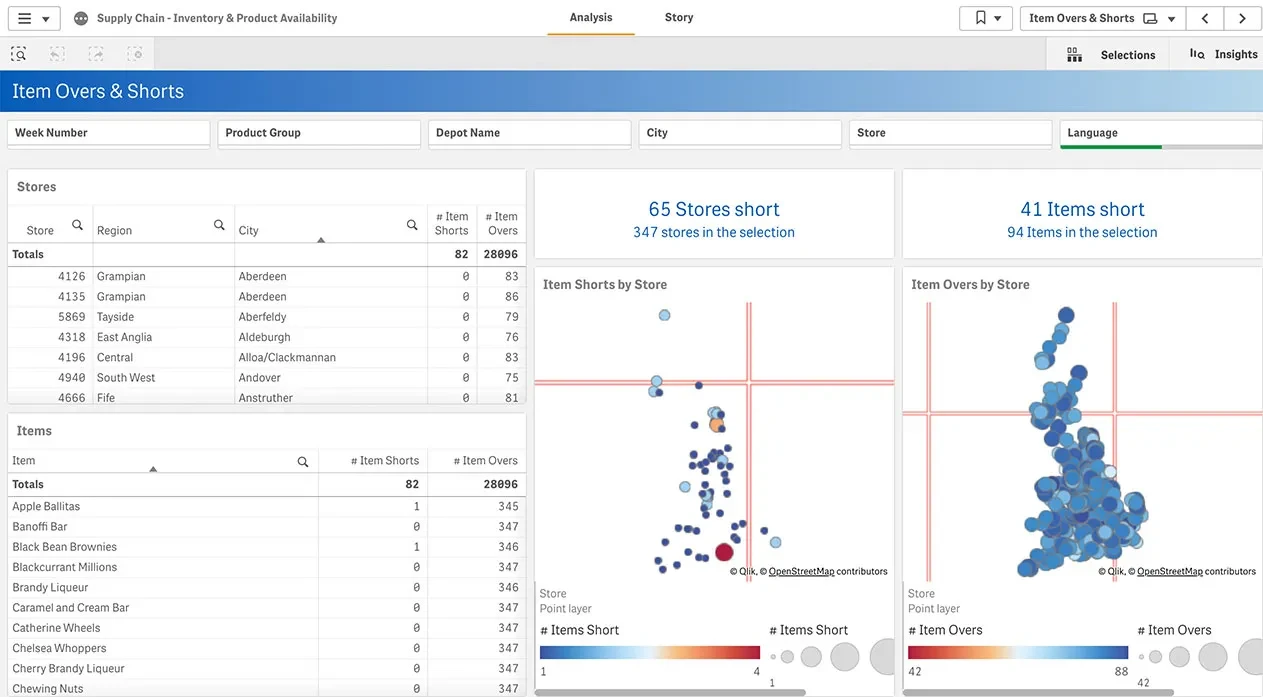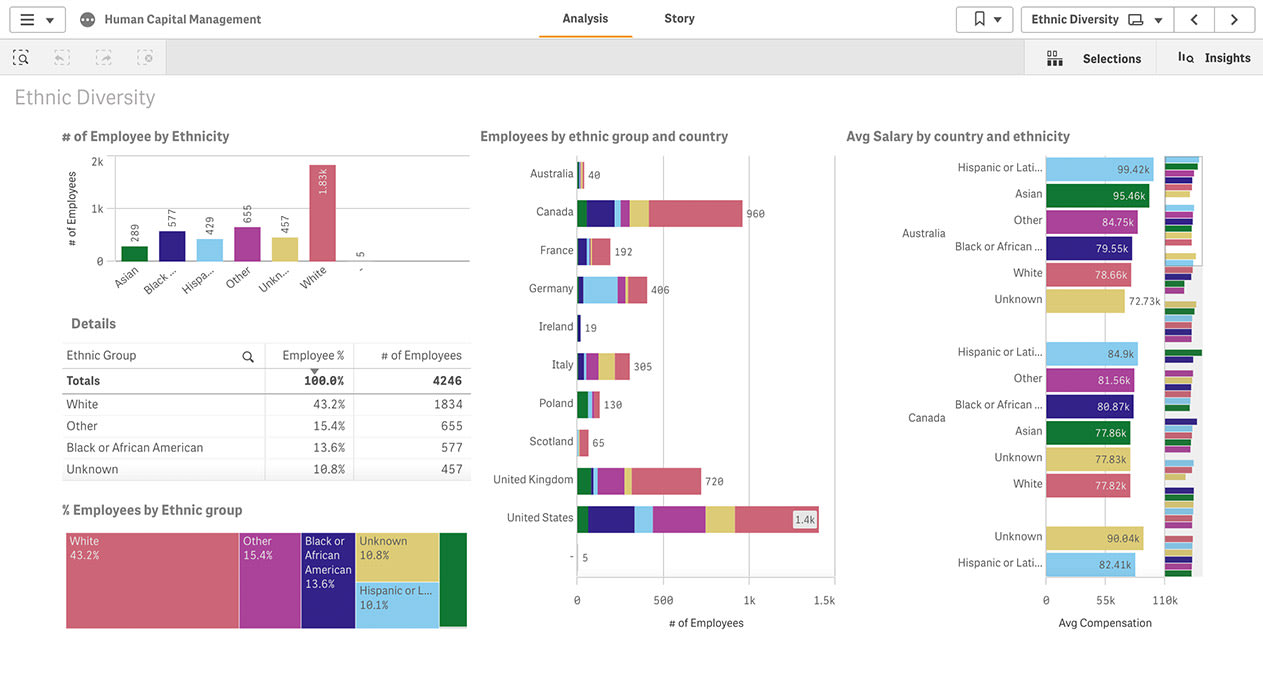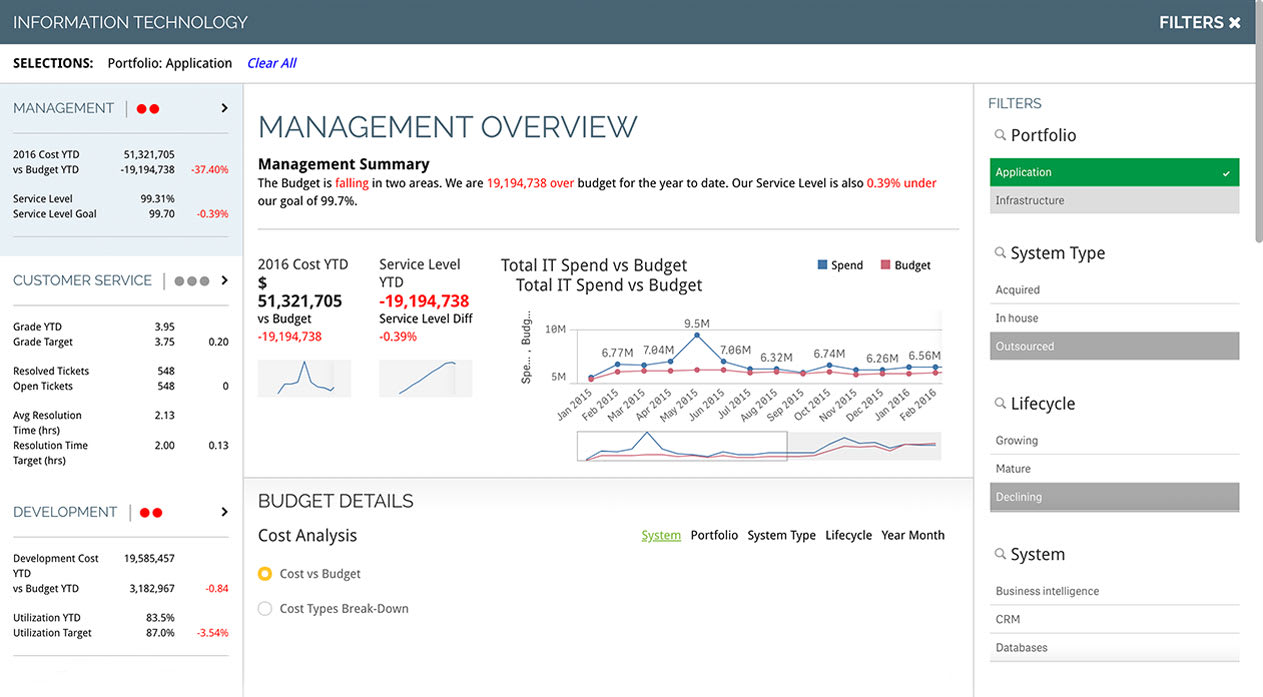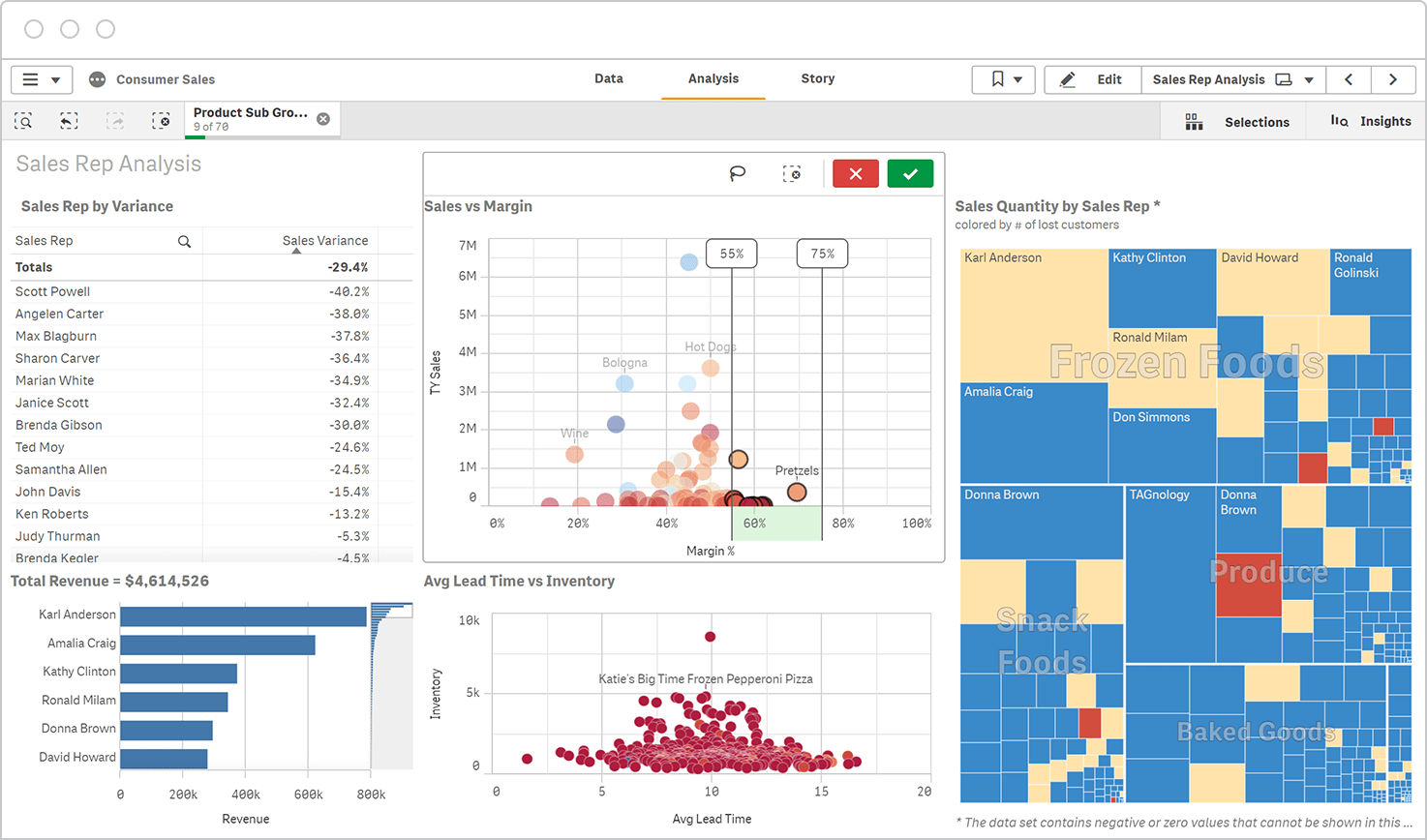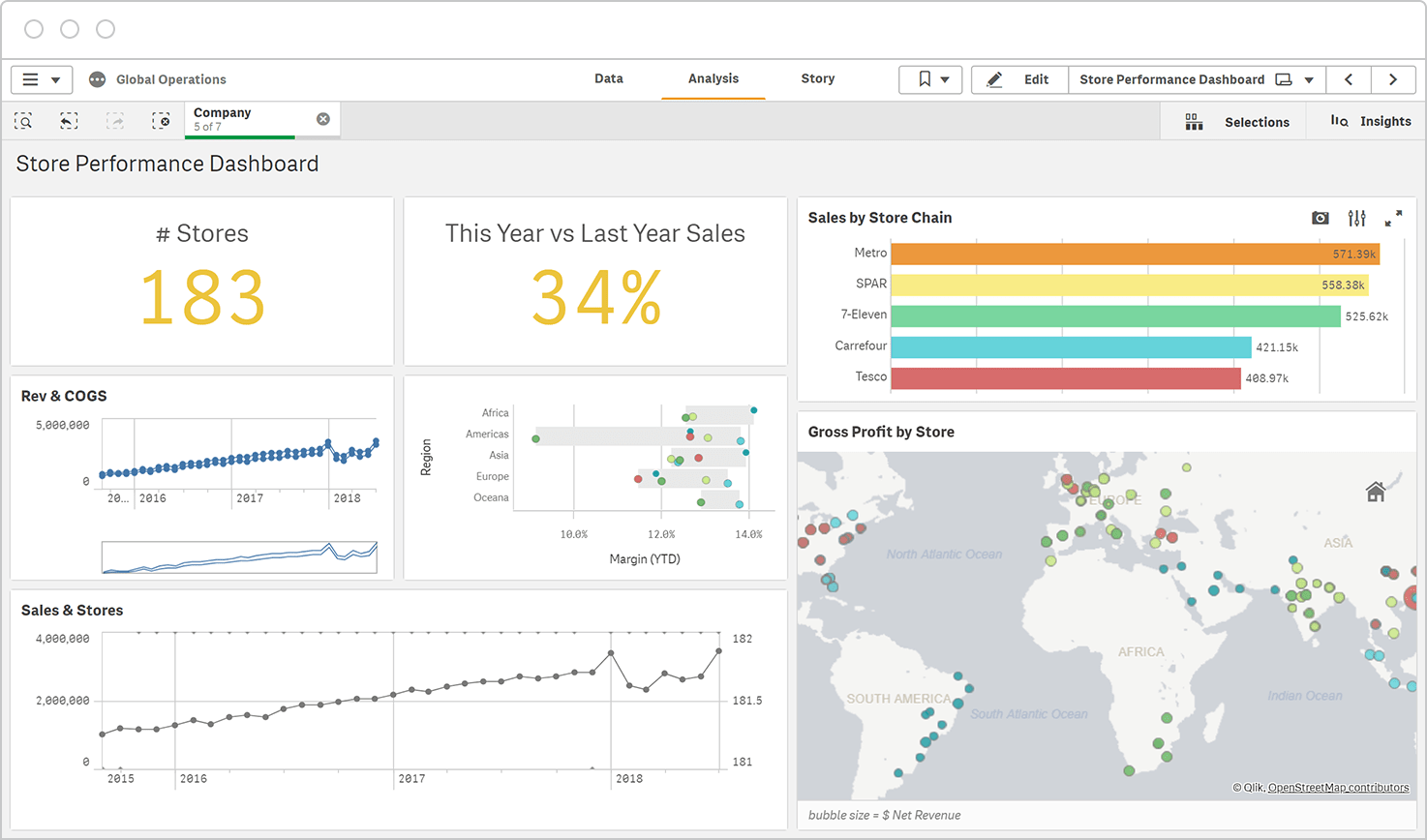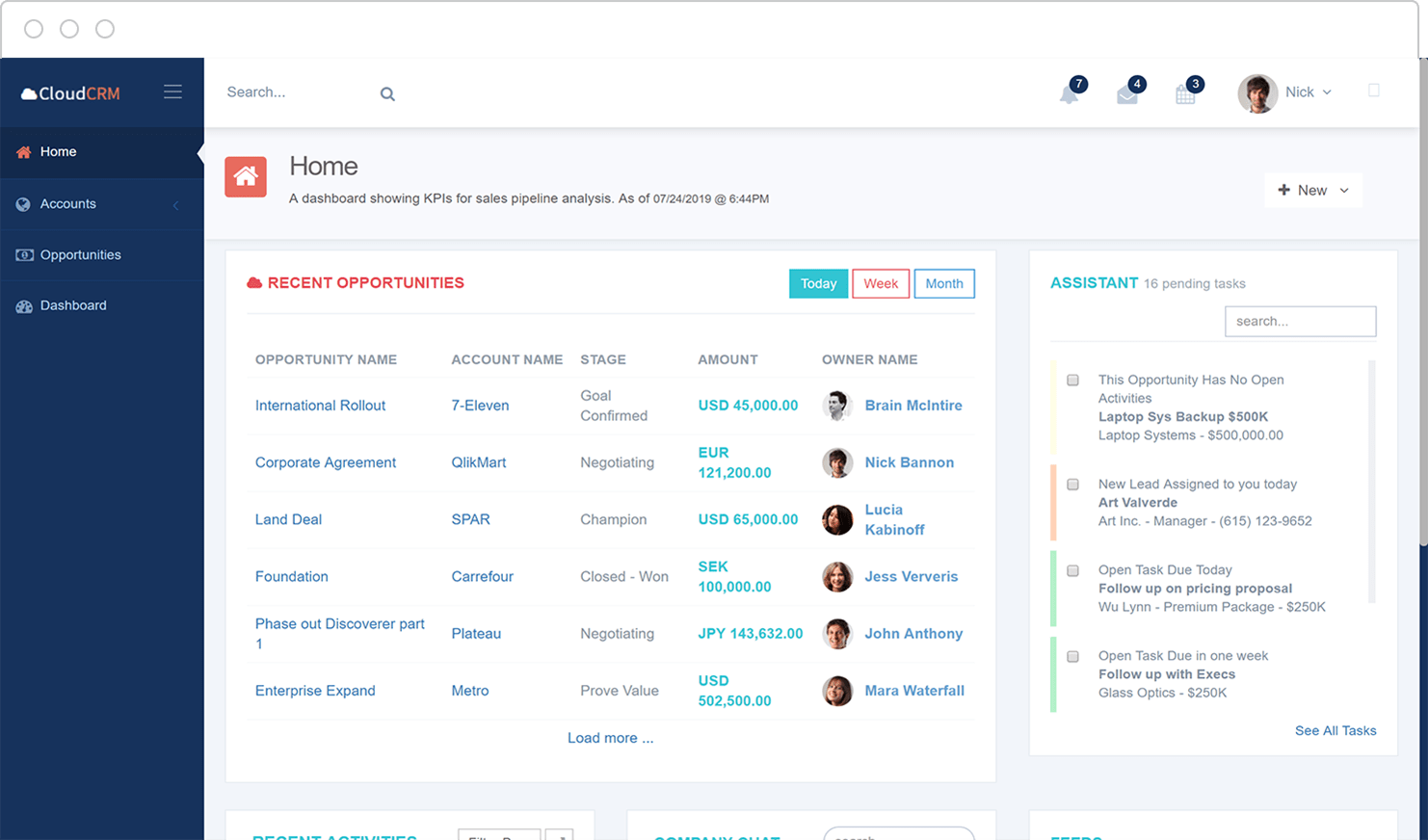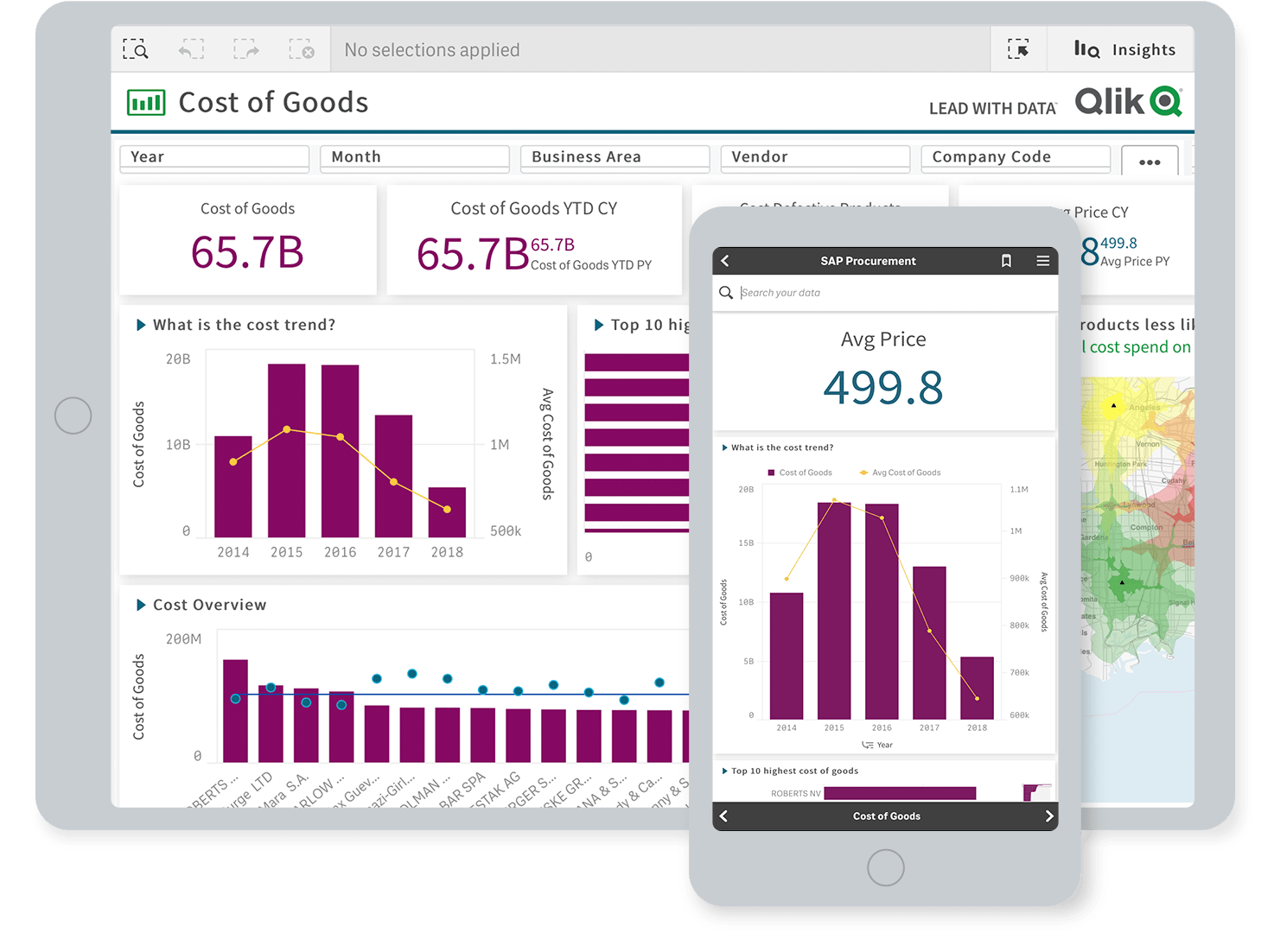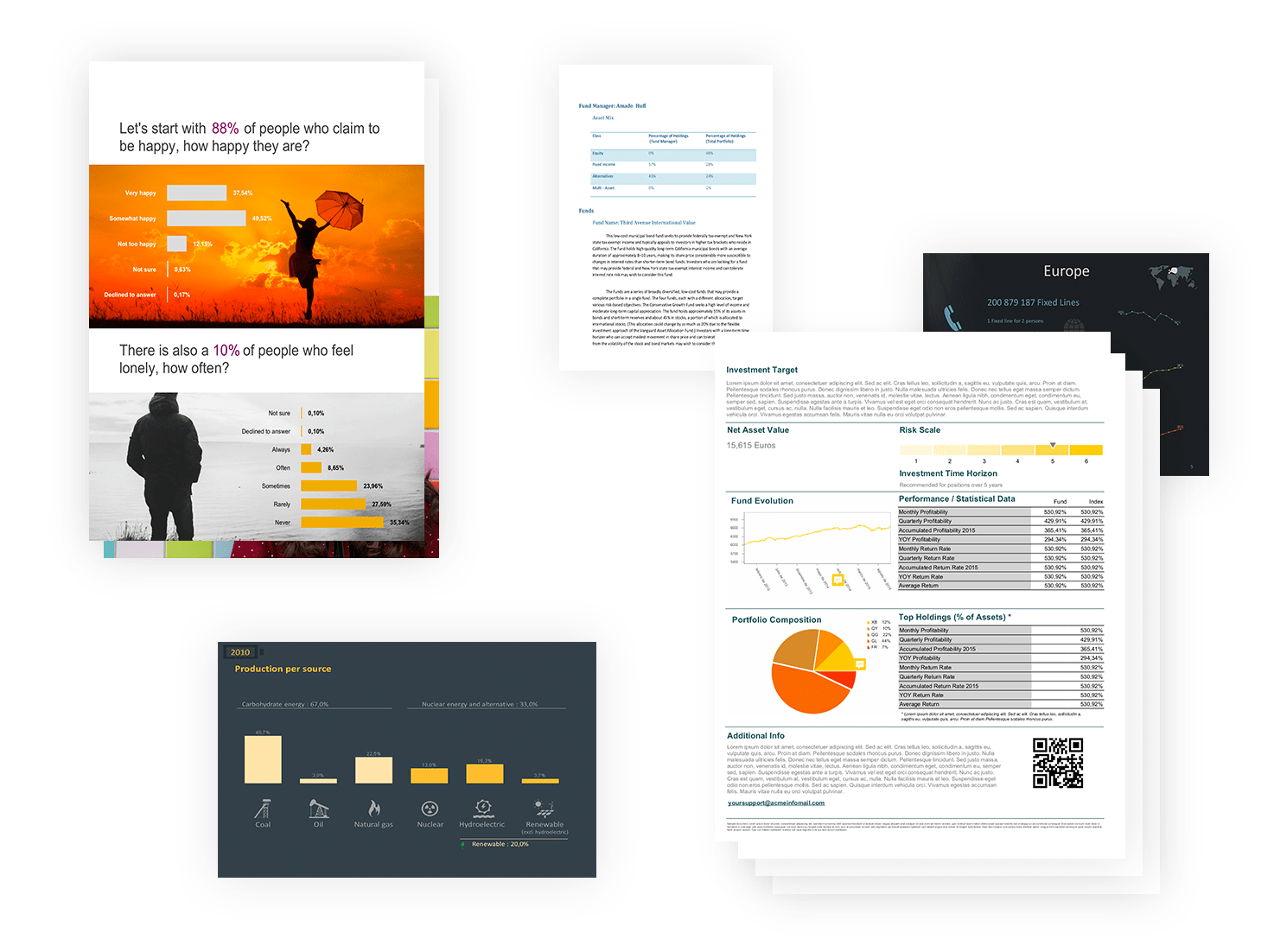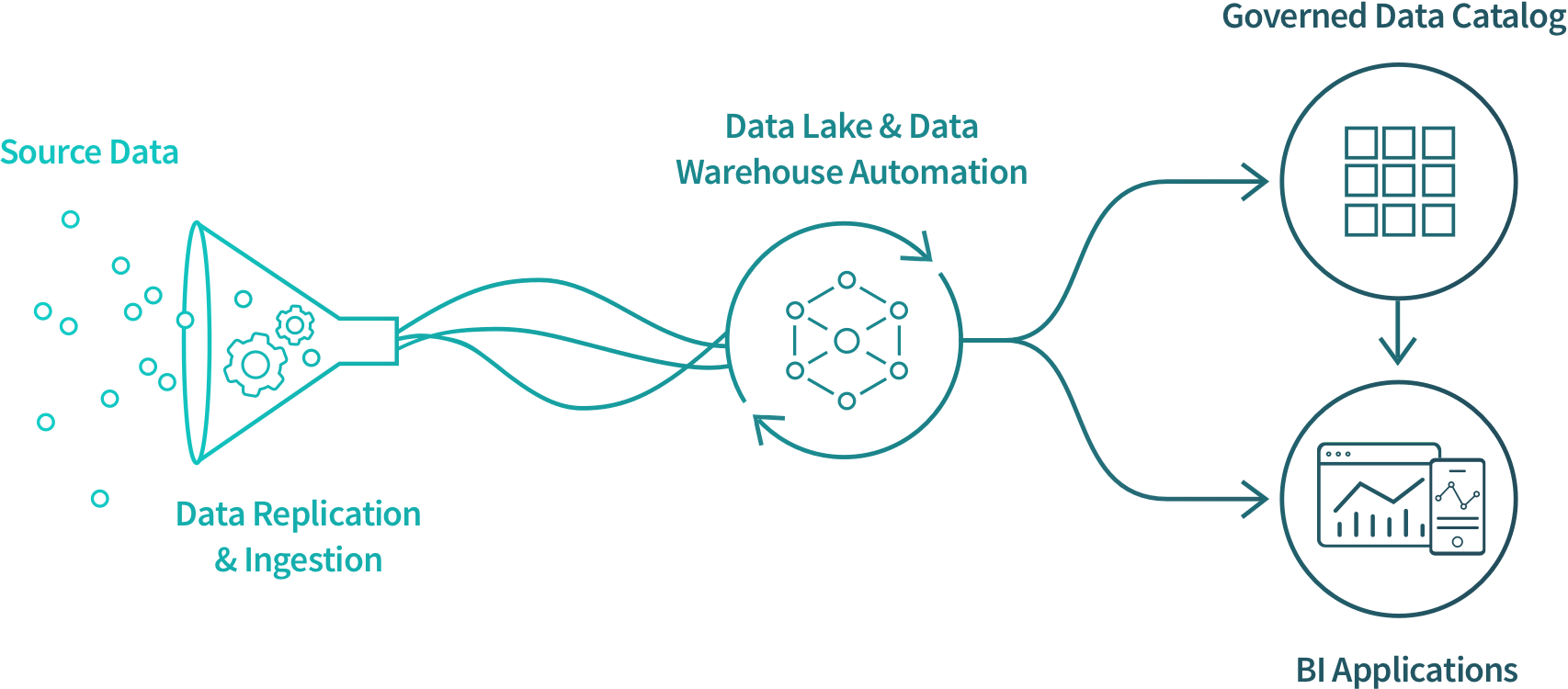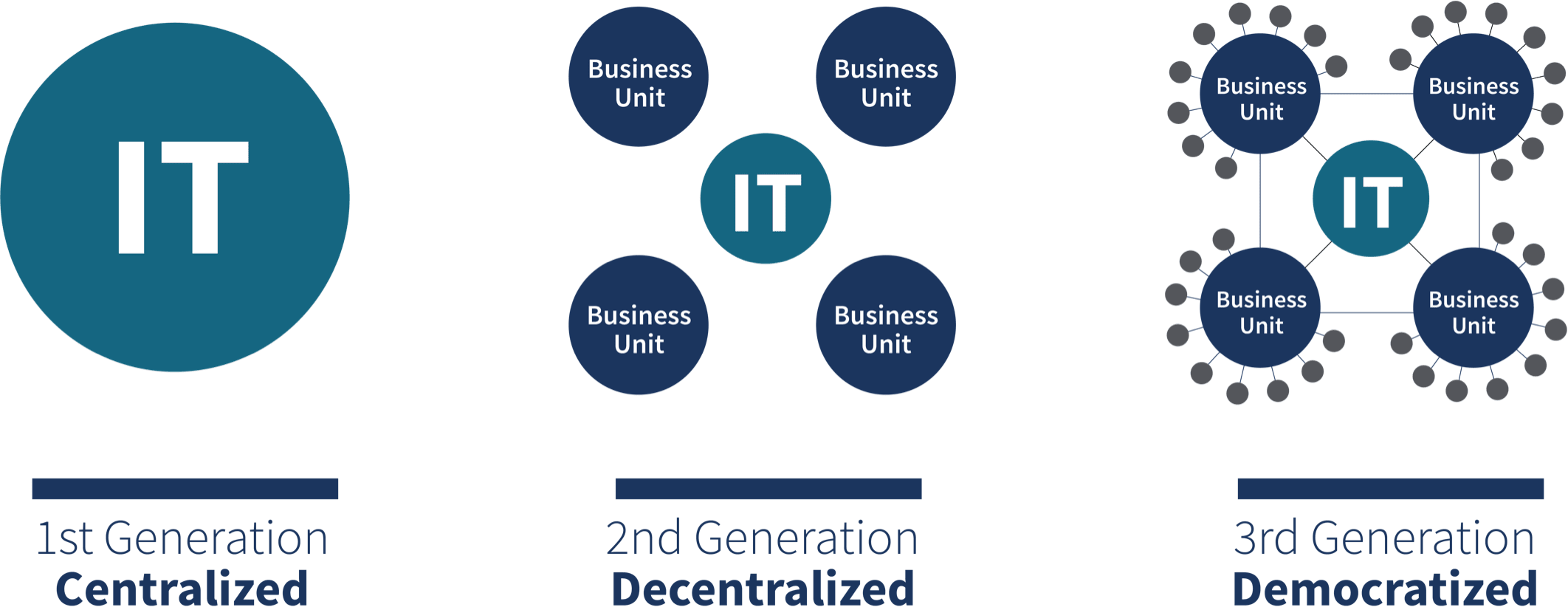How Business Intelligence Works
The traditional BI process required a lot of heavy lifting in terms of coding and manual analysis. Today’s top tools incorporate AI to enhance each aspect of business intelligence by automating processes, improving accuracy and efficiency, enabling advanced techniques, and generating insights and recommended actions.
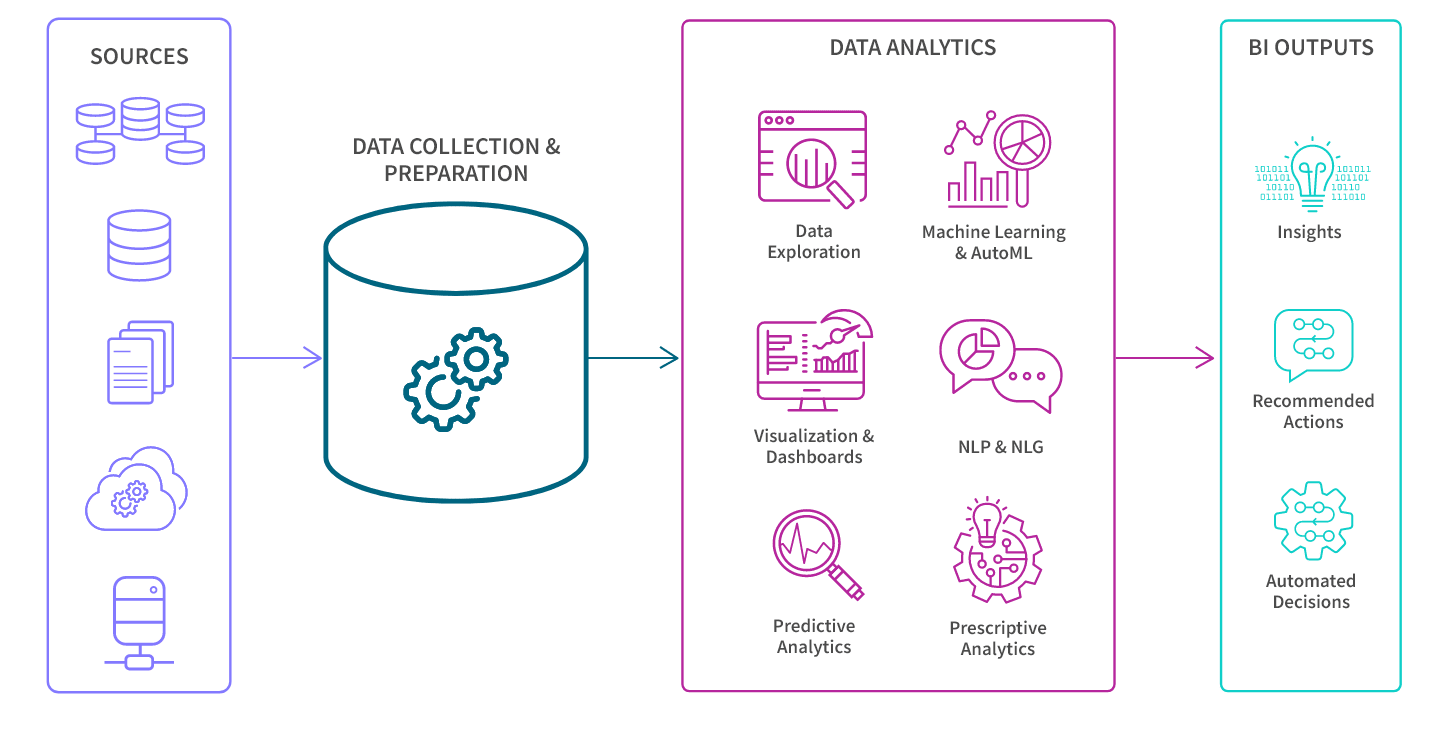
Let’s walk through the diagram above.
Data is sourced from operational systems such as transactional, supply chain, and CRM applications. This can be historical data or real-time streaming data.
This data is extracted, transformed, and combined into a repository such as a data warehouse or data lake, typically in the cloud. This data integration process gives you a comprehensive, unified view of your business and facilitates efficient data retrieval and analysis for BI purposes.
AI algorithms in modern BI improve the efficiency and accuracy of data preparation by analyzing large volumes of data to detect errors.
Modern BI software makes it easy for you to use this data to perform different types of data analysis (sometimes referred to as business analytics), for example:
Find hidden patterns, trends, and valuable insights from large datasets through data mining and exploration.
Create interactive visualizations and dashboards which help you identify patterns and develop insights.
Build custom machine learning models without extensive training by leveraging AutoML.
Chat with your BI tool and get immediate and understandable responses.
Use prescriptive and predictive analytics to make predictions about future outcomes.
As before, the outputs are actionable insights to improve your business operations. But now, many of these insights, and even prescribed actions, are provided to you by AI. Plus, your BI software can be integrated into other systems and trigger alerts and actions automatically.
















